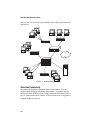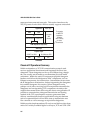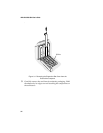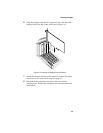
2-8
ANA-5910/5930/5940 User’s Guide
LAN Emulation
Clearly, ATM’s connection-oriented approach for communication is
distinctly different from the broadcast-oriented approach traditional
LANs use. ATM LAN Emulation, an industry-standard facility all
Adaptec ATM adapters support, provides necessary mechanisms to
address this requirement.
LAN emulation allows ATM networks to provide all services
available within legacy LAN environments. With LAN emulation,
ATM networks use their facilities to mimic communication
establishment procedures occurring within broadcast-oriented
legacy LANs. Once communication is established, ATM uses
normal ATM connections to exchange messages, usually many times
faster than with legacy LANs. Emulated LANs may consist entirely
of ATM end stations, include transparent bridges that connect exiting
LANs to ATM networks, or both.
ATM LAN Emulation facilities consist of
■
LAN Emulation Clients (LECs)
■
LAN Emulation Configuration Server (LECS)
■
LAN Emulation Server (LES)
■
Broadcast and Unknown Server (BUS)
The following sections describe these components.
LAN Emulation Clients (LECs)
A LEC is an internal control VCC within end stations. LECs
communicate with other LAN emulation components and LECs to
establish and provide LAN Emulation services. A LEC wholly
comprises the interface between legacy applications and ATM
networks. Therefore it must support various interfaces such as
NDIS and ODI.
When communicating with another LEC, Data Direct VCCs transport
the data. For outbound data frames, LECs convert the LAN MAC
addresses that legacy LAN applications use into ATM network
addresses and pass the typically large application data frames to the
correct ATM layer (AAL5) for conversion into cells for transmission.
For inbound cells, LECs reverse the process.


















